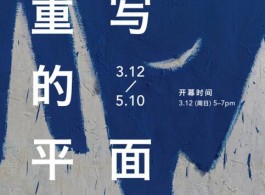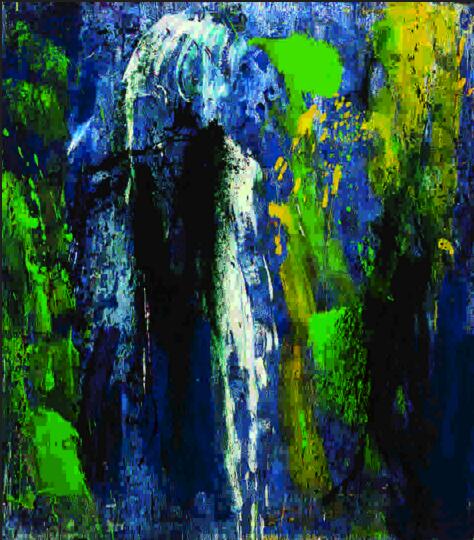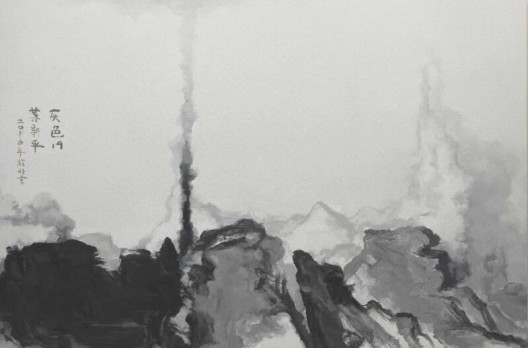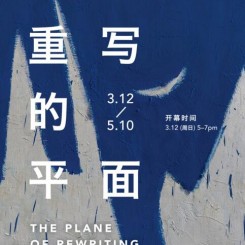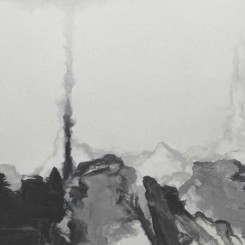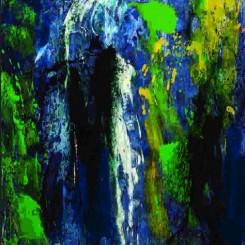Pearl Lam Galleries
Shanghai
Shanghai—Pearl Lam Galleries is delighted to present The Plane of Rewriting, an exhibition that explores the gestures of rewriting as a transformative process of self-renewal, where new traces are created on top of past debris. The exhibition brings together eight Chinese artists whose works illuminate the idea of writing, rewriting, and erasing as a thread of metaphysical action connected to a personalized scenario in art creation. In the action of rewriting, the audience encounters the artists’ deep contemplation, reflection, and transformation that informs their everyday existence in the world without presupposing any teleological goals.
As a long-term and continual process, rewriting is an individual’s response to the urgency of time as well as a world of materiality. The urgency of time reflects the limited span of a person’s corporeal existence, while rewriting provides artists a way to converse with this limitation. Every moment that is experienced in the process of rewriting is intangible, self-reflexive, and provocative. With that being said, the rewriting of an individual returns to collective moments of ambiguity and pivotal decisions. The exhibition The Plane of Rewriting gathers artists who can be seen as bearers of the plane of momentum, who reassemble those scattered but decisive moments of time. The power that converges becomes a plane of stability in the face of limitation and uncertainty, sustaining a sense of order that stands out from purposelessness and ultimate chaos.
When Huang Yuanqing (b. 1963) paints, it is never about painting, but is always about writing. With Chinese calligraphy deeply embedded in the artist’s practice, Huang navigates the lines on his canvas as if he were writing Chinese hieroglyphs. A twist, turn, mark, or finish is inspired by a literati expression, in which painting and writing have the same origin, leading viewers to ponder whether the unrecognisable scribbles and graffiti are a word oran image. As completion seems unattainable for Huang, he returns to his old paintings to retouch or erase them; by “rewriting” over traces of the past, the artist is able to sustain a state of self-renewal and constant reformation.
Looking at Ma Kelu’s (b. 1954) landscape paintings from the past to the present, we notice a progression in his artistic trajectory. As a member of the No Name Society in the 1970s, Ma was one of the few pioneering Chinese artists to paint using an impressionist style. The depiction of light and colour was most prominent in his 1970s landscape series; however, from 1998 to 2000, Ma painted another landscape series named Williamsburg in Brooklyn, which was more rational and objective compared to his earlier expressive brushworks. The artist took anew turn in 2006 when he recreated the Williamsburg series on a larger scale, which is seen as a revisit to the district in which he once lived. The area transformed from a district of abandoned warehouses and factories to an avant-garde and fashionable paradise full of galleries, cafés, and studios in more recent years. By repainting a neighborhood that has since evolved beyond recognition, Ma expresses a sense of nostalgia towards the desolated home in his memory.
In ancient Chinese philosophy, landscape paintings were seen as a way to see the world through the mind rather than the eyes. Su Xinping (b. 1960) creates this “landscape of the mind” in a grey overtone that is neither representational nor allegorical, but an image or a shadow that exists in his memory. Su’s art elucidates the complicated relationship of a personal history with a public one, a history that he struggles to cope with, namely the urban landscape of a quickly developing China, in which contains hidden wounds, fragmented moments, and latent environmental issues. By creating a landscape of personal memory in the framework of a historical progression, we see an individual’s endeavour to rewrite his own history.
How should a viewer perceive a painting when it is neither solely narrative nor just abstract, but is rather “abstract narrative”? When a circle appears in Tan Ping’s (b. 1960) painting, it is no longer a shape, but a reminder of a shocking experience the artist had when looking at cancer cells in a tumour taken away from his father’s body in a hospital, which he later appropriated as a personal mark in his artwork. Taking human cells as his inspiration, Tan focuses on the free states of “spreading” and “proliferating”, which are similar to writing unconsciously, while at the same time consciously converting these actions into structured images.
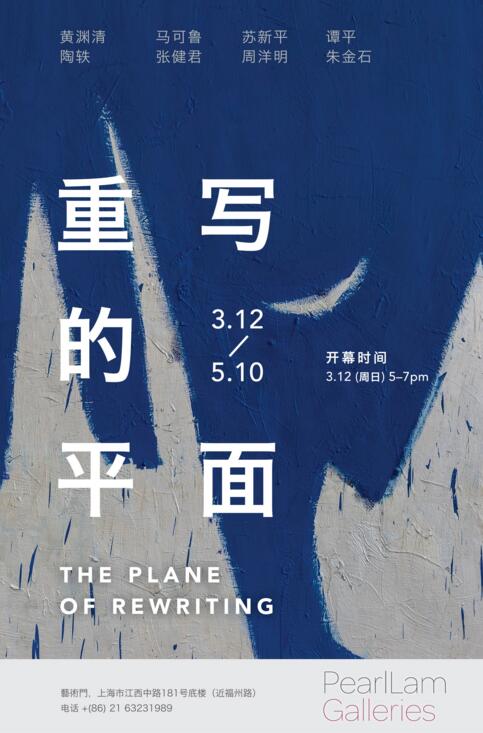
Calculation and precision are words that may come to mind when looking at Tao Yi’s (b. 1978) paintings. As a successor of Kazimir Malevich and Piet Mondrian, Tao favors the absolute order of geometry, a truth that sustains itself in the uncertain and chaotic universe. However, by adding a few black wiggly lines on top of a perfectly structured geometrical composition, the artist seems to be hinting at the “imperfection” of the world, as perfection does not truly exist. The stability of the pictorial plane in Tao’s paintings achieves a kind of sublimity in terms of visual aestheticism.
The ephemerality of time highlights the poignant nature of life. Material objects fade and humans die, but culture remains. In Zhang Jian-Jun’s (b. 1955) performance, he “rewrites” Qian Zi Wen, an ancient Chinese poem and symbol of Chinese culture. The gesture of writing transforms from a private practice to a public performance, as the poem is rewritten using a modern style of calligraphy and contemporary punctuation symbols that did not exist in the original ancient text. Zhang’s performance installation hints at the transience of time in the face of a changing culture and globalized world.
At first glance, Zhou Yangming’s (b. 1971) paintings consisting of a multitude of hand-drawn lines can be described as the result of homogeneous repetition, but heterogeneous reformation is what truly captures the spirit of his art. Although his lines pile on top of each other in a similar manner, it is with acute observation that viewers are able to distill the emotion, physicality, and mood that looms behind each individual line. The meditative austerity of repeating the same action (drawing lines) over and over is a record of the artist’s daily life, and thus becomes a collection of memories manifested in neatly arranged lines.
The relationship between painting and installation becomes more intimate and interwoven in Zhu Jinshi’s (b. 1954) work as he appropriates certain qualities of painting into that of a “painting-installation”. Instead of painting on a canvas’ surface, a thick mass of colourful paints is squeezed, or perhaps hidden, between two canvases, causing the audience to ask: is this a painting or an installation? Zhu’s transformative use of painting materials (paint and canvas) in his installation underscores an artistic exploration between the boundary of different art forms.

